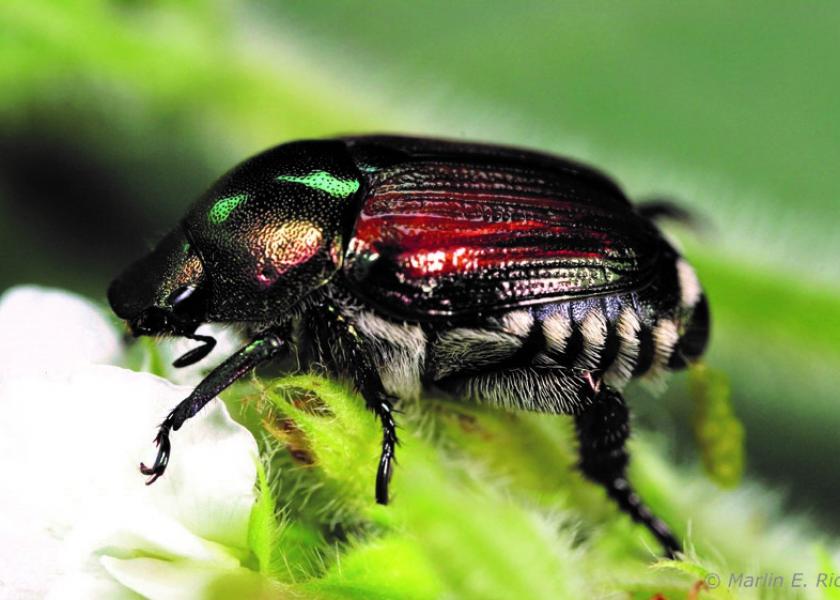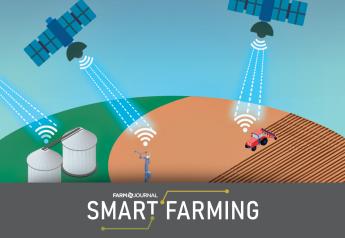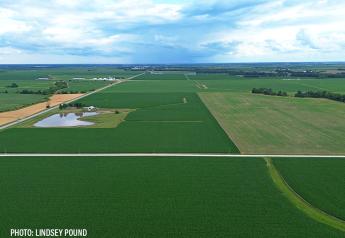Japanese Beetle Reports Rise

It’s the time of year when Japanese beetles emerge and begin to show up (and potentially cause issues) in corn and soybean fields.
Here are some top considerations as you scout for Japanese beetle, measure the damage, and calculate your next step.
First, scout the whole field/a good representative portion of a field. This pest emits pheromones, which lead to groups of them congregating in small areas, particularly field edges.
Soybeans
In soybeans, scouting is all about measuring leaf defoliation. Insecticide treatment should be considered at 20% leaf defoliation for reproductive growth stage soybean. (30% for pre-bloom and pod fill). When assessing leaf defoliation, estimate the percent defoliation in at least five areas of the field. Also measure beetles per foot of row.
They're Back! @PrairielandFS pic.twitter.com/qHUMqKMTVE
— Dusty Morrow (@DMorrowPRLFSDSM) June 20, 2017
Drift on soybeans and Japanese beetles are the hot topic today. I'll bet waterhemp will be number one by late summer pic.twitter.com/YSD0vGn2vP
— Travis Weaver (@TWeaver_65) June 28, 2017
Corn
Japanese beetles feed on corn silks as adults, disrupting pollination process, and extensive silk clipping can result in incomplete ear fill and yield loss.
Consider a foliar insecticide treatment during tasseling and silking if these three descriptions are true:
· 3 or more beetles per ear
· Silks have been clipped to ½-inch
· Pollination is less than 50 percent complete
Read more:







